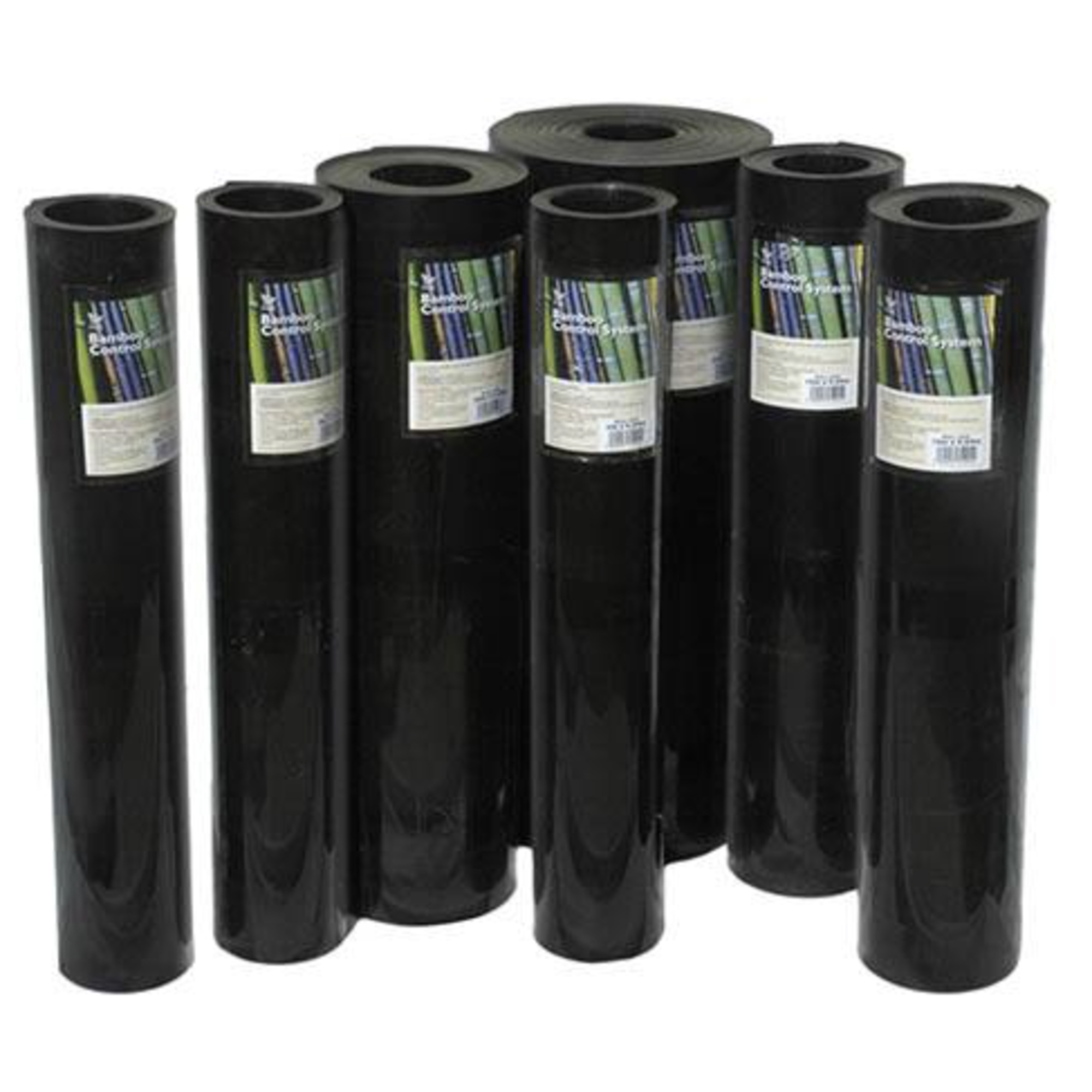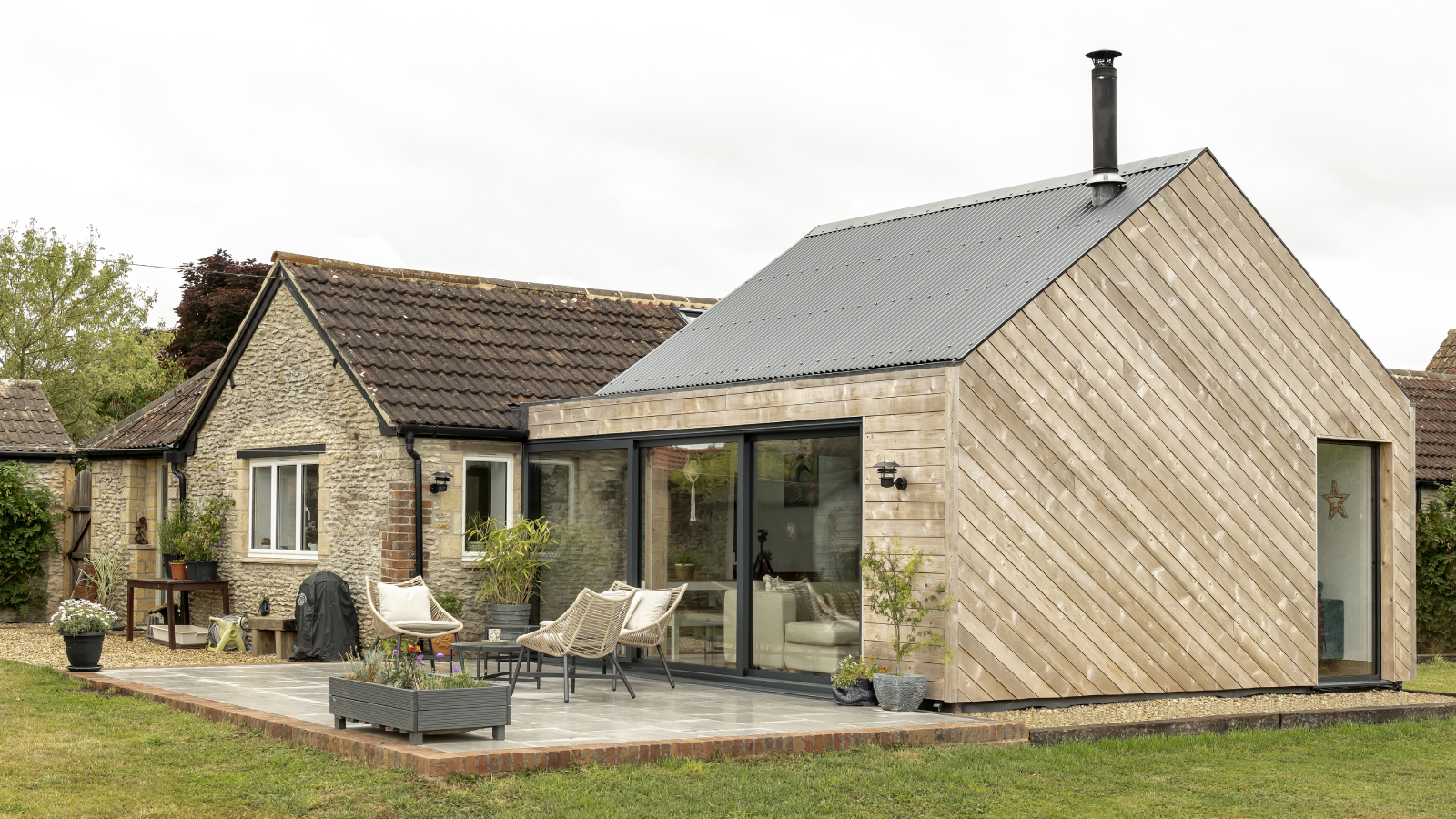How to kill bamboo and stop it causing damage to your home and garden
Bamboo is attractive to look at and hardy, but can quickly overwhelm an unprepared gardener. Follow these five easy steps to keep it under control or kill it off entirely
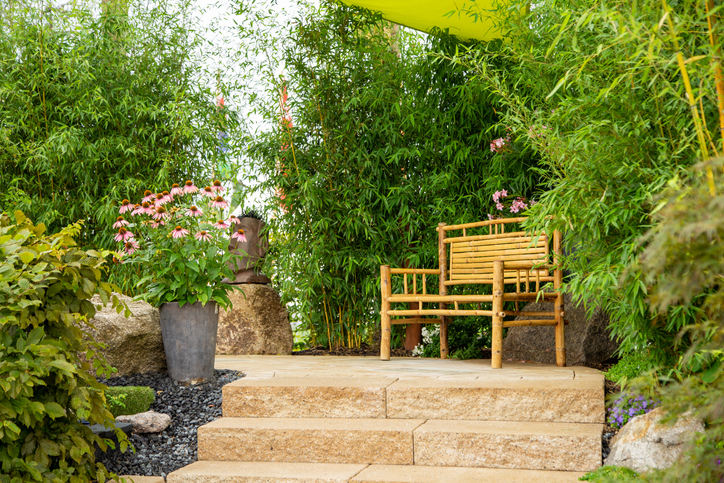
Due to its fast-growing nature and great ornamental value, bamboo is popular as a natural screening plant for gardens.
In recent times, however, homeowners are becoming aware of the risks of invasive bamboo. If left unchecked it can become out of control with roots potentially causing structural damage to surrounding properties, fences, patios, and decking.
"Many people successfully grow bamboo and really enjoy the wonderful variety of cane colours, as well as its movement and drama. However, anyone contemplating growing bamboo should be well informed about all the care and maintenance that is needed to control this aggressively colonising plant," says Fiona Jenkins, garden expert at My Job Quote.

A landscaper and gardening expert with over 25 years of experience in the industry. Currently she works for MyJobQuote as their resident expert on all things gardening. She is highly knowledgeable and her expertise has featured in many reputable publications.
How to get rid of bamboo in 5 easy steps
Depending on how overgrown your bamboo plant is, it can be a difficult and lengthy task to kill bamboo off entirely and prevent it from regrowing elsewhere in your garden.
It can be done, however, and continued measures then put in place to keep your garden landscaping bamboo-free.
If you are using chemicals you will need to tackle your bamboo in their active growing season (spring), as dormant roots won't absorb anything.
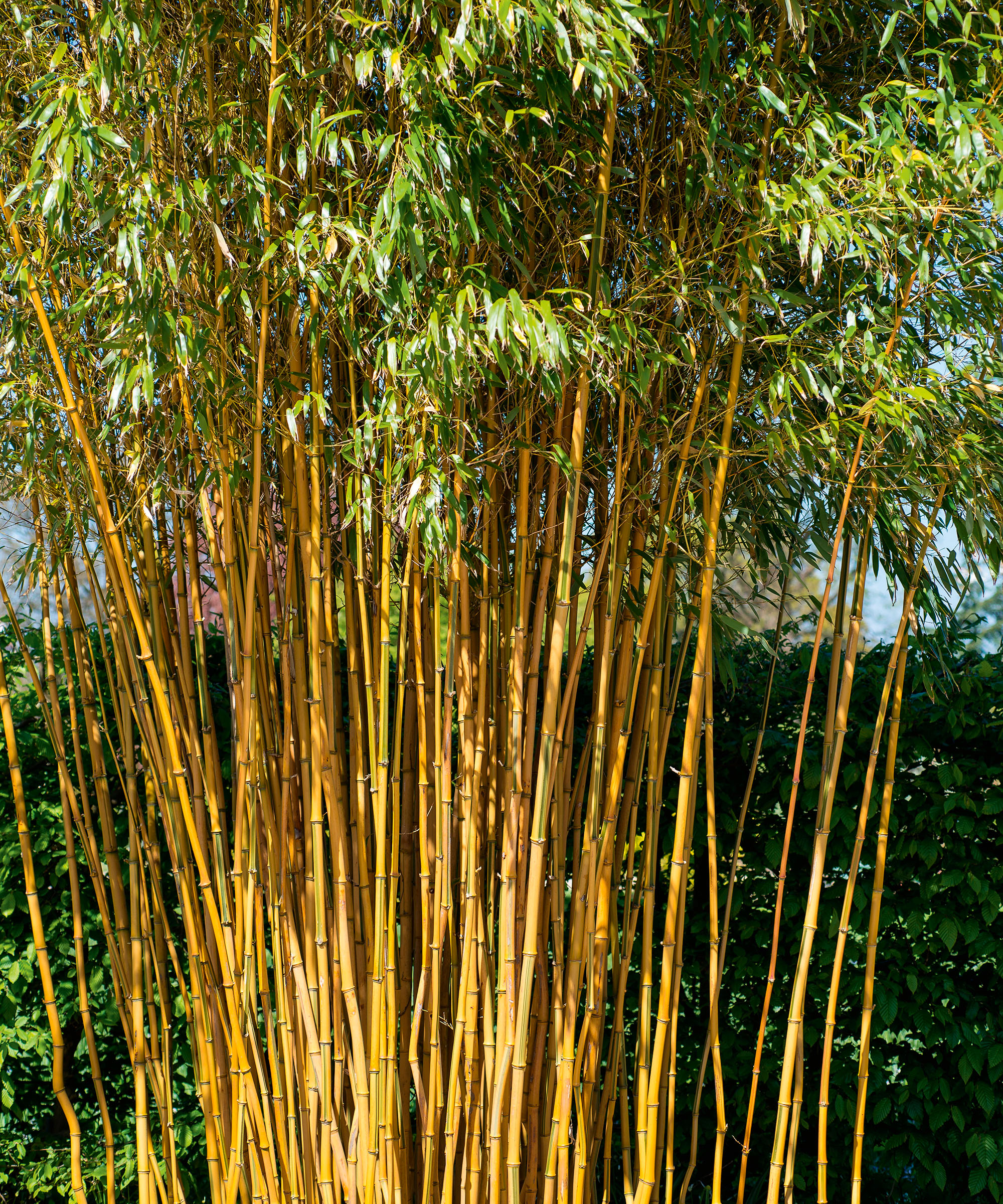
1. Know what type of bamboo you are dealing with
The first step is to find out what type of bamboo you are growing. There are certain bamboos which can become more invasive than others and are plants that can damage your home. Invasive varieties should not be planted under any circumstances whereas other types can be grown with precautionary measures in place.
Bring your dream home to life with expert advice, how to guides and design inspiration. Sign up for our newsletter and get two free tickets to a Homebuilding & Renovating Show near you.
"Clumping varieties of bamboo are less aggressive when it comes to spreading, and with care can be successfully enjoyed in your garden. These types include Bambusa, Fargesia, Dendrocalamus, and Schizostachyum," says Fiona Jenkins.
"Despite their reputation for being less invasive than running types, if you do plant a clumping bamboo variety it may be prudent to install a rhizome barrier, nonetheless," says Fiona.
Running bamboo plants, which have long runner-type roots, these include Phyllostachys, Pleioblastus and Sasa varieties should not be planted and existing plants will be more difficult to remove.
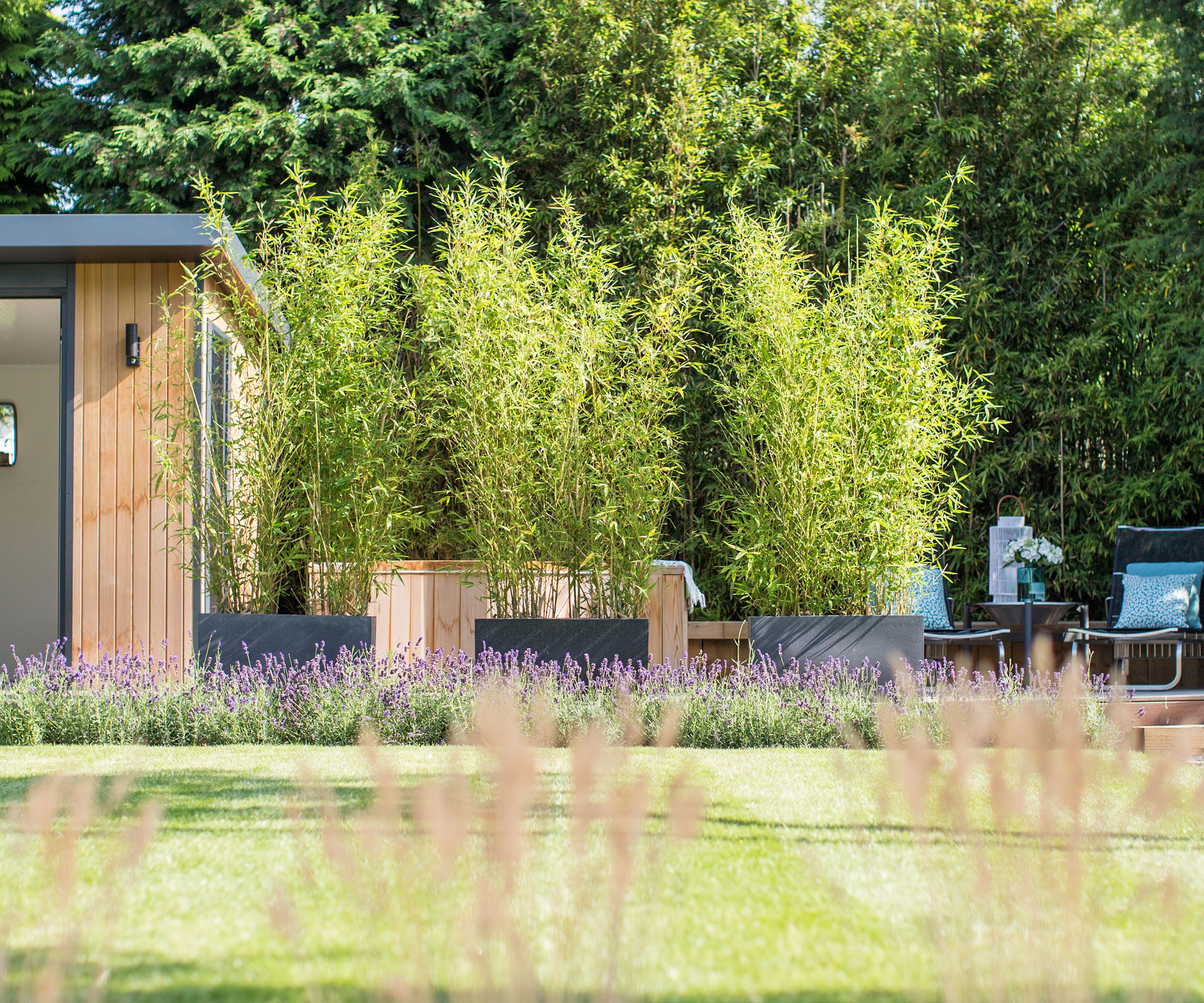
2. Cut the canes right down
Cutting canes back won't get rid of bamboo but removing them will mean that it's easier for you to see the area you're dealing with and start digging up the roots. Cut canes can be left to dry and used as plant supports in your garden.
Regular pruning is good practice for controlling bamboo plants to prevent them from becoming invasive and needing to be removed. "Prune the rhizomes twice a year to keep the plant in check, even if you have installed a vertical barrier," says Fiona Jenkins.
Shop handy bamboo cutting tools

The length of the handle of these loppers makes them super low-effort when it comes to cutting back thick canes and branches. Smaller pruners won't be up to removing mature bamboo without considerable effort. This tool is also ideal for cutting back trees and bushes.
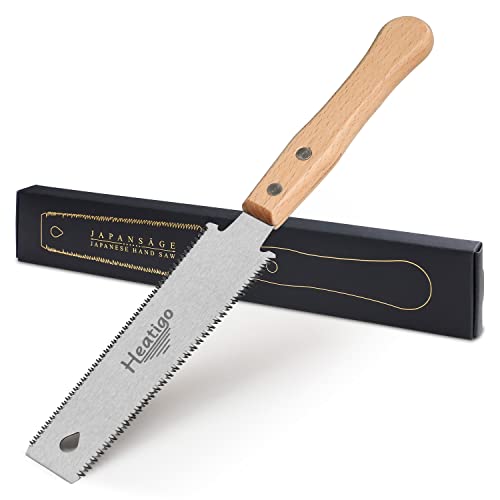
This saw can be used to cut down bamboo canes and saw dry ones to size if you're reusing them. Not ideal for those who have weaker wrists from arthritis for example. The saw can be used in DIY projects as well so will be a handy investment for your house and garden.
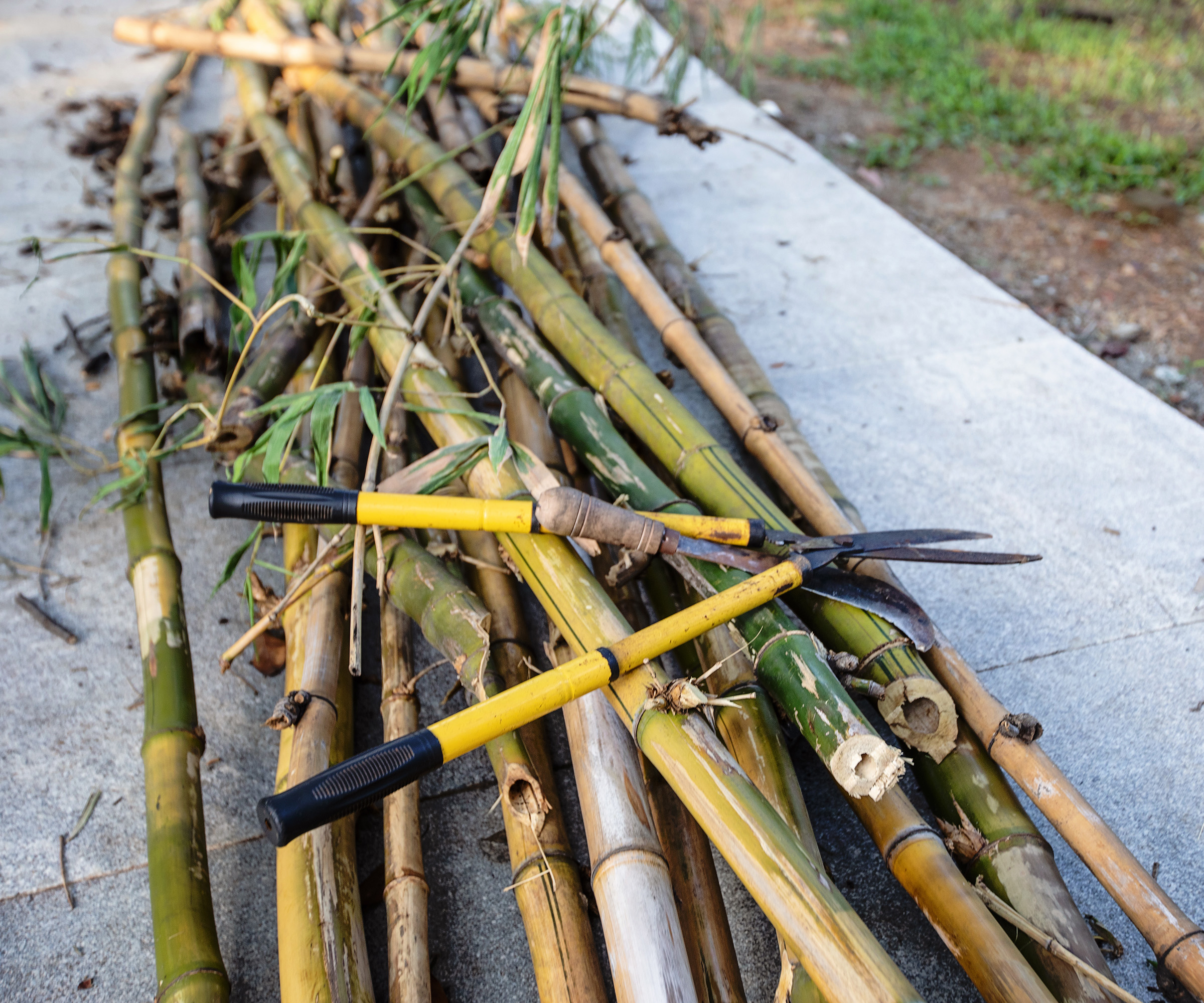
3. Dig out the roots as much as possible
If you are looking at how to kill bamboo off entirely you must begin by removing the root system beneath the soil. "Pruning the canes and shoots will not control the spread of bamboo as this happens via the roots," explains Fiona Jenkins.
The more mature your plant, the deeper your roots will be. This is usually the case for running varieties of bamboo as roots have been known to grow to over a metre deep. If this is the case for you, hiring a small digger will be your best option, to ensure you get down deep enough to remove the entire root system.
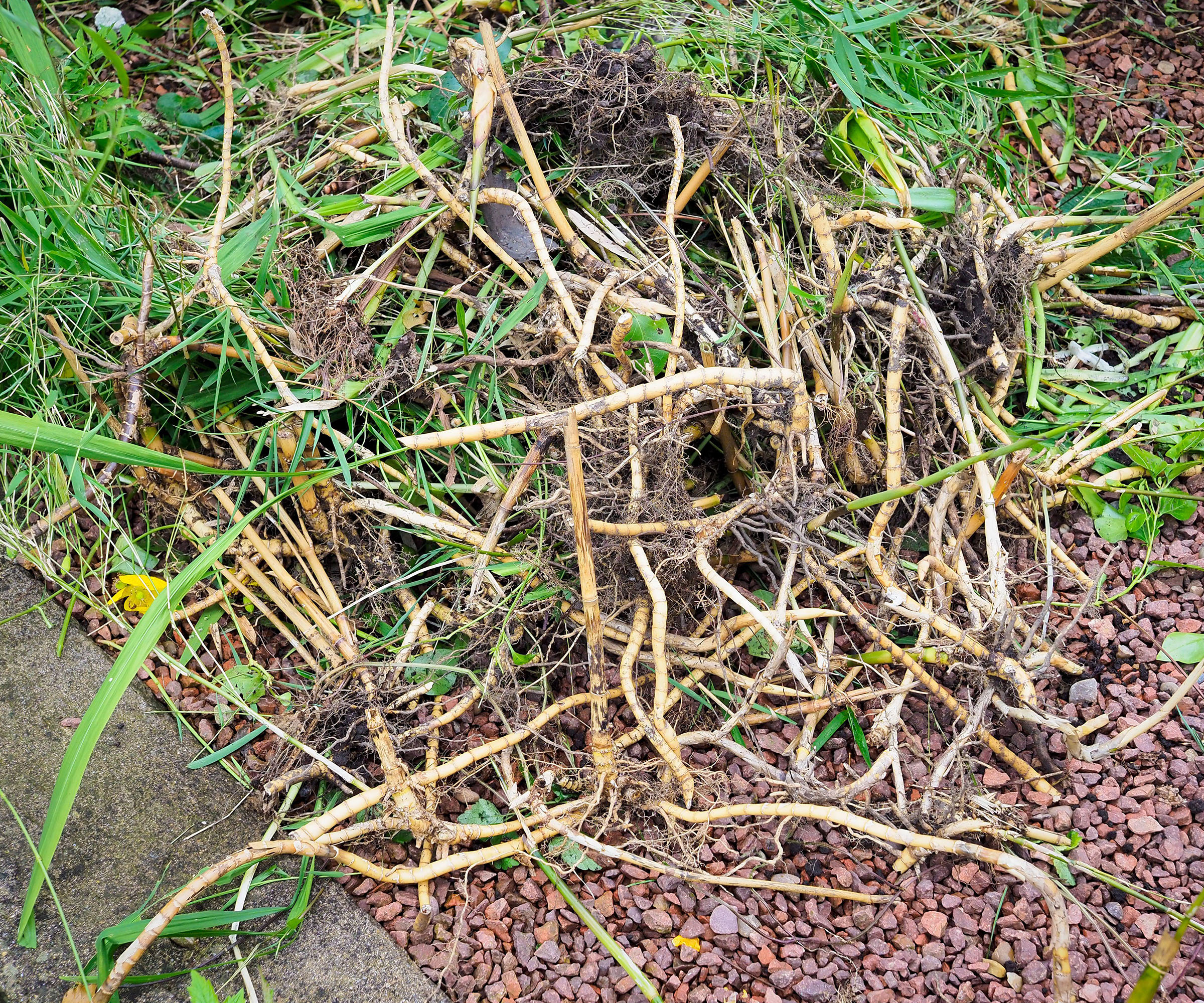
4. Only use chemicals if absolutely necessary
It is possible to buy bamboo weedkiller, however, this method can damage the ecosystem of your garden. The RHS for example, don't support the use of weedkillers and believe that non-chemical approaches to removing bamboo are just as effective.
"The roots and rhizomes of bamboo can be extensive, so even with repeated applications of a systemic weedkiller it can take several years to kill a bamboo," says the RHS article on bamboo control.
Therefore it is only recommended that you use chemicals as a last resort, if the presence of bamboo in your garden poses a risk to biodiversity itself, or if you've been unable to successfully eradicate bamboo by digging.
If you do use chemicals, garden designer Rosemary Coldstream suggests digging out as much of the root as you can and using a weedkiller such as Round-Up Tree Stump Killer Root Killer at Amazon to destroy the root.
Alternatively, drill a hole into bamboo stumps and add the weedkiller directly into the hole.
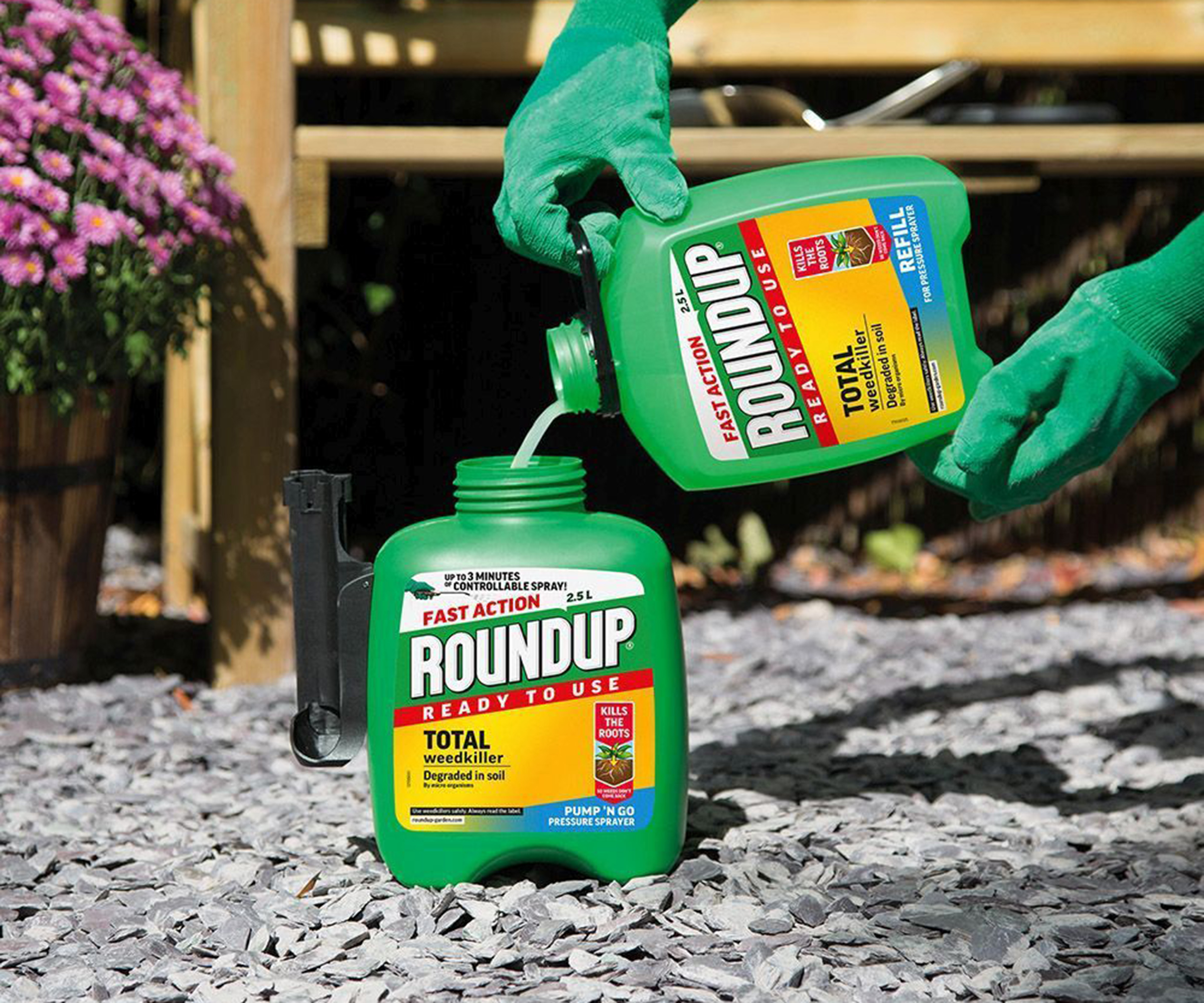
5. Monitor for any offshoots growing elsewhere
"Once you've removed roots continue to monitor the area, removing any new shoots that appear as this will weaken the bamboo until it dies,” says gardening expert Lee Smith at Composite Warehouse.
“Removing the shoots interferes with the plant's capacity to absorb sunlight and develop. The plant gradually becomes less effective as a result of this steady loss of energy," explains Robert Silver, who runs the Pro Gardening Blog.
“The trick is to be persistent and consistent. To efficiently deplete the bamboo's resources, regular cutting is required through the growing season, which is typically in spring and summer,” says Robert.
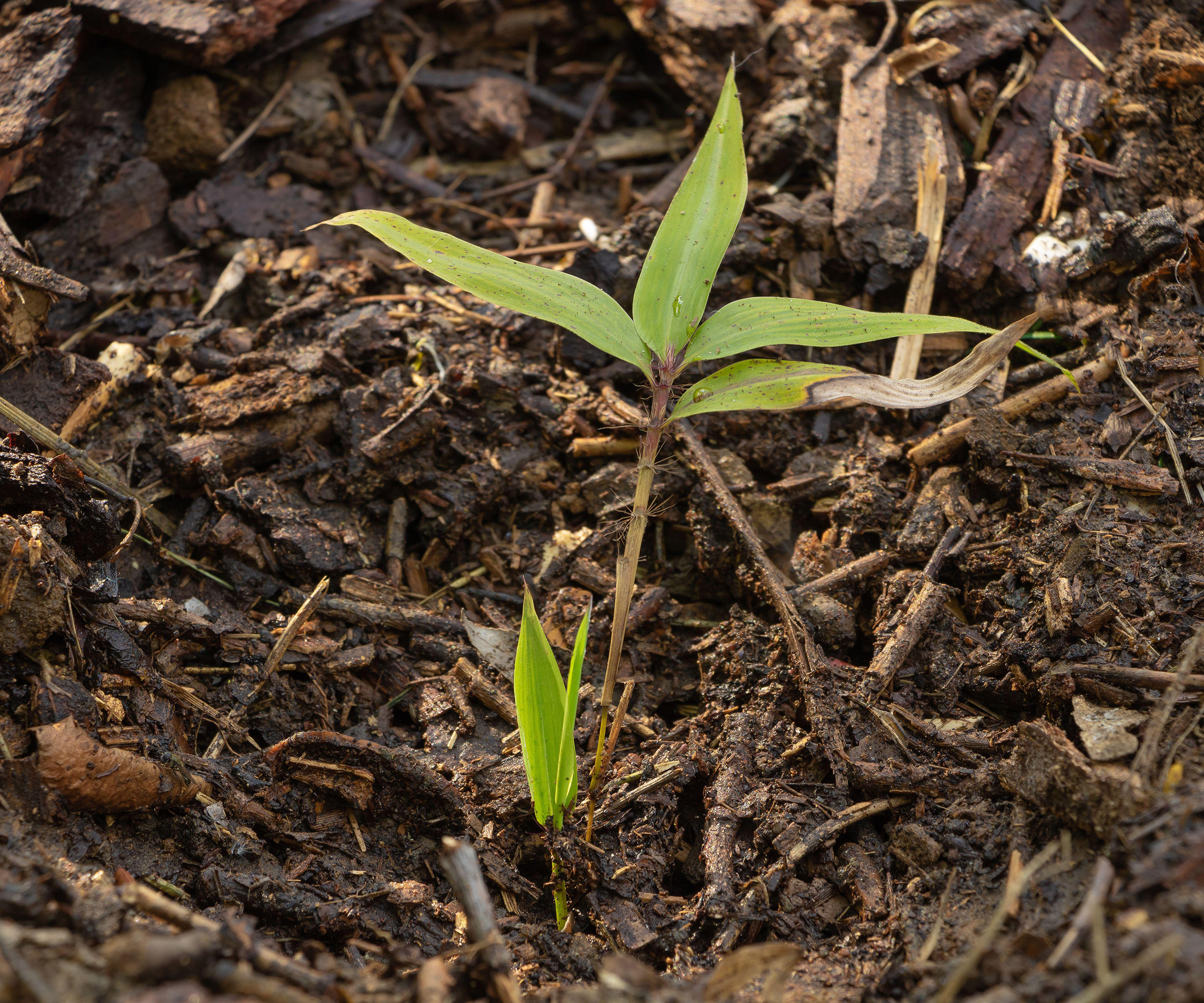

Robert is a seasoned master gardener who has toured different popular gardens worldwide and published numerous gardening articles. Besides that, Robert loves it when he is busy in his garden and learns by doing his own many gardening tasks.
How to stop bamboo from spreading
"When planting bamboo you can do so in such a way that it restricts the plant’s ability to spread its roots. This is done by installing vertical barriers which encircle the plant and stop running bamboo from colonising other areas of the garden or crossing boundaries to neighbouring areas," says Fiona Jenkins.
"To do this, dig a foot-wide trench that is between 2 and 4 feet deep around the bamboo to install the barrier, allowing enough room for your bamboo to grow without encroaching too much on the rest of the garden."
"Polypropylene is the best material for rhizome control as concrete slabs can crack and metal sheets can rust, in both cases allowing bamboo roots to penetrate the barrier. A thick plastic barrier is tough enough to stop the spread of the rhizomes while being sufficiently flexible to curve around the bamboo. Allow the barrier to protrude around 3 inches above the ground to stop the roots from growing over the top. This top edge can be concealed with mulch," says Fiona.
Shop bamboo root control barriers
These root barriers will help to protect driveway edges, garden fences, and patios from invasive spreading.
FAQs
How do you kill bamboo without using chemicals?
Robert Silver, who runs the Pro Gardening Blog, says a practical technique to control bamboo growth is to routinely prune bamboo stalks at ground level with pruning shears or a saw. Like this Byhagern Pruning Saw with Curved Blade at Amazon.
Another technique is to regularly mow over the bamboo patch with the best lawnmower. By setting your lawnmower at a low height, you can cut emerging bamboo shoots.
What will kill bamboo roots?
“There are also several natural remedies including vinegar and salt. However, while these can prevent bamboo growth, they won’t always provide a long-term solution,” says gardening expert Lee Smith at Composite Warehouse.
“Another method for killing off bamboo is to deal with the roots, this will ensure a longer-term solution to prevent bamboo growth.
“You need to dig out as much of the roots as you can and continue to monitor the area, removing any new shoots that appear, this will weaken the bamboo until it dies. Spraying either natural or shop-bought repellents directly onto the roots and staying consistent in your efforts are also effective methods.”
What is the best weed killer for bamboo?
Garden expert Robert Silver says that given the potential effects on the ecosystem, using herbicides should only be a last resort. However, in situations where other methods prove ineffective or impractical, herbicides can be considered.
“Choose pesticides intended for controlling bamboo, typically containing active ingredients like glyphosate or imazapyr,” he says.
“When absorbed, these substances impede bamboo's ability to grow. To reduce environmental hazards, strictly adhere to product directions and safety precautions, put on safety gear, dilution or appropriate application rates, and refrain from over spraying. Be aware that herbicides may need to be applied more than once over the years to completely eradicate bamboo.”
If you're looking for alternatives to bamboo to create a sense of privacy in your garden, there are plenty of other garden screening ideas that can be just as effective.

Teresa was part of a team that launched Easy Gardens in 2018 and worked as the Editor on this magazine. She has extensive experience writing and editing content on gardens and landscaping on brands such as Homes & Gardens, Country Homes & Interiors and Living Etc magazine. She has developed close working relationships with top landscape architects and leading industry experts, and has been exposed to an array of rich content and expertise.
In 2020 Teresa bought her first home. She and her partner worked alongside architects and builders to transform the downstairs area of her two bedroom Victorian house in north London into a usable space for her family. Along the way she learned the stresses, woes and joys of home renovation, and is now looking to her next project, landscaping the back garden.


